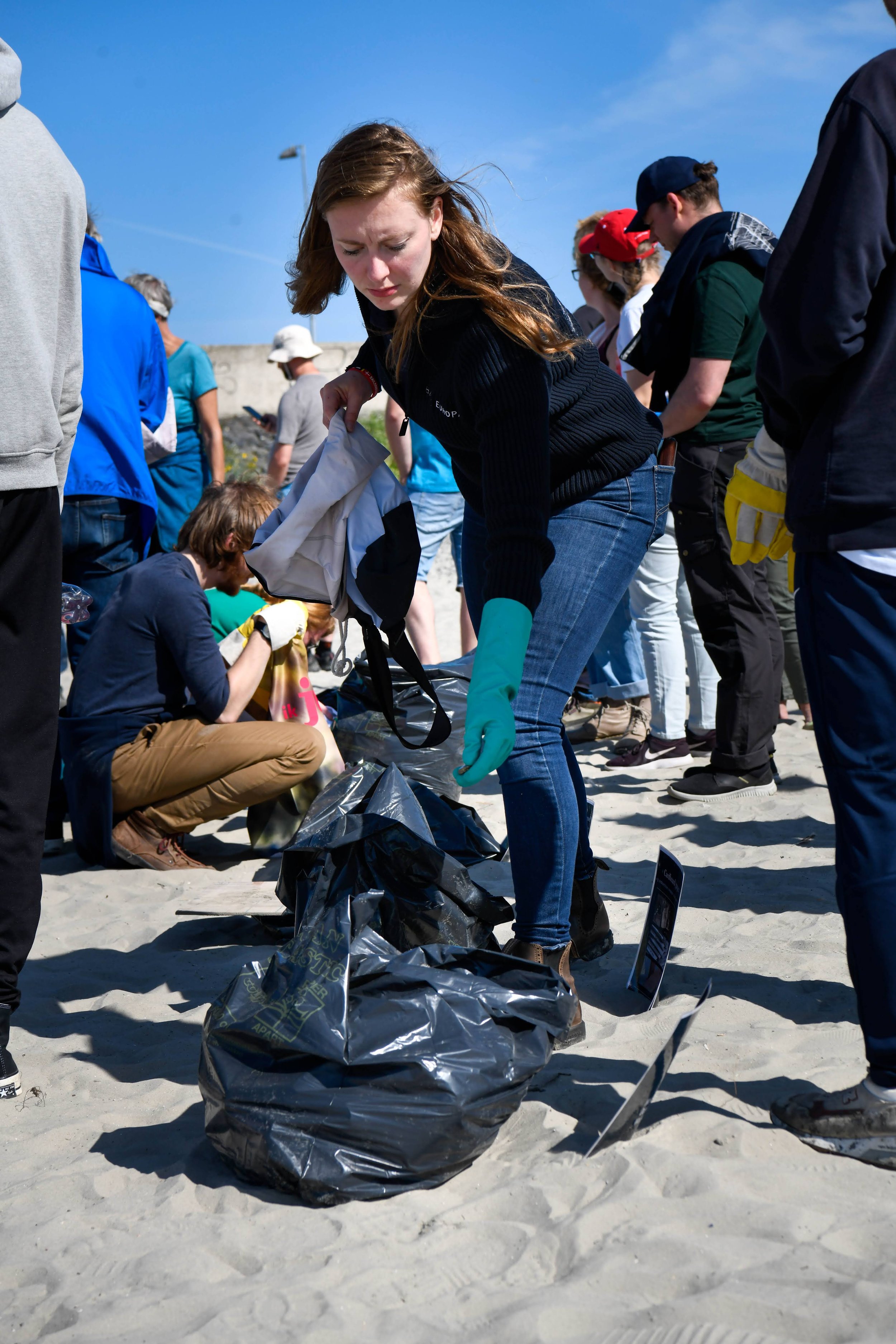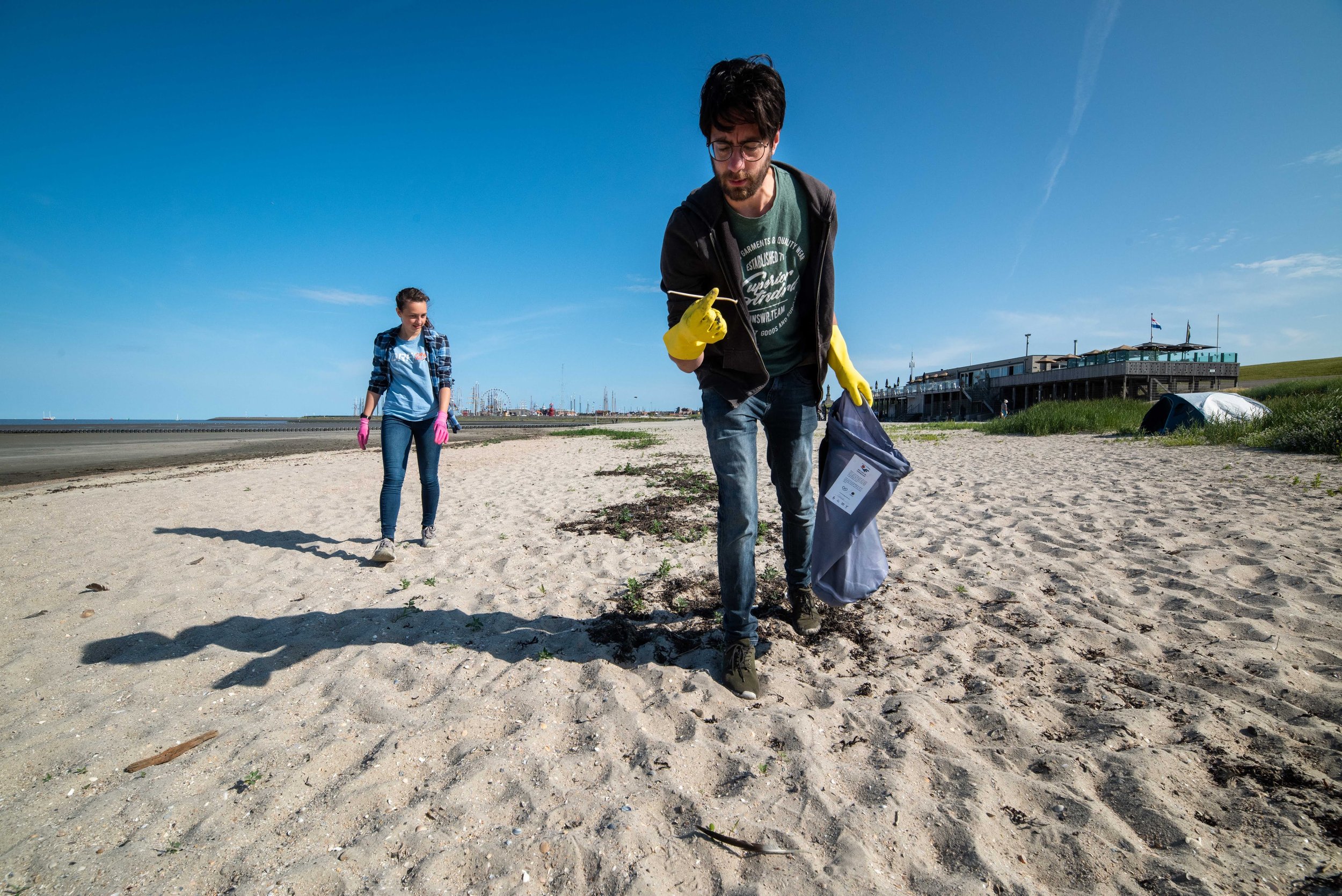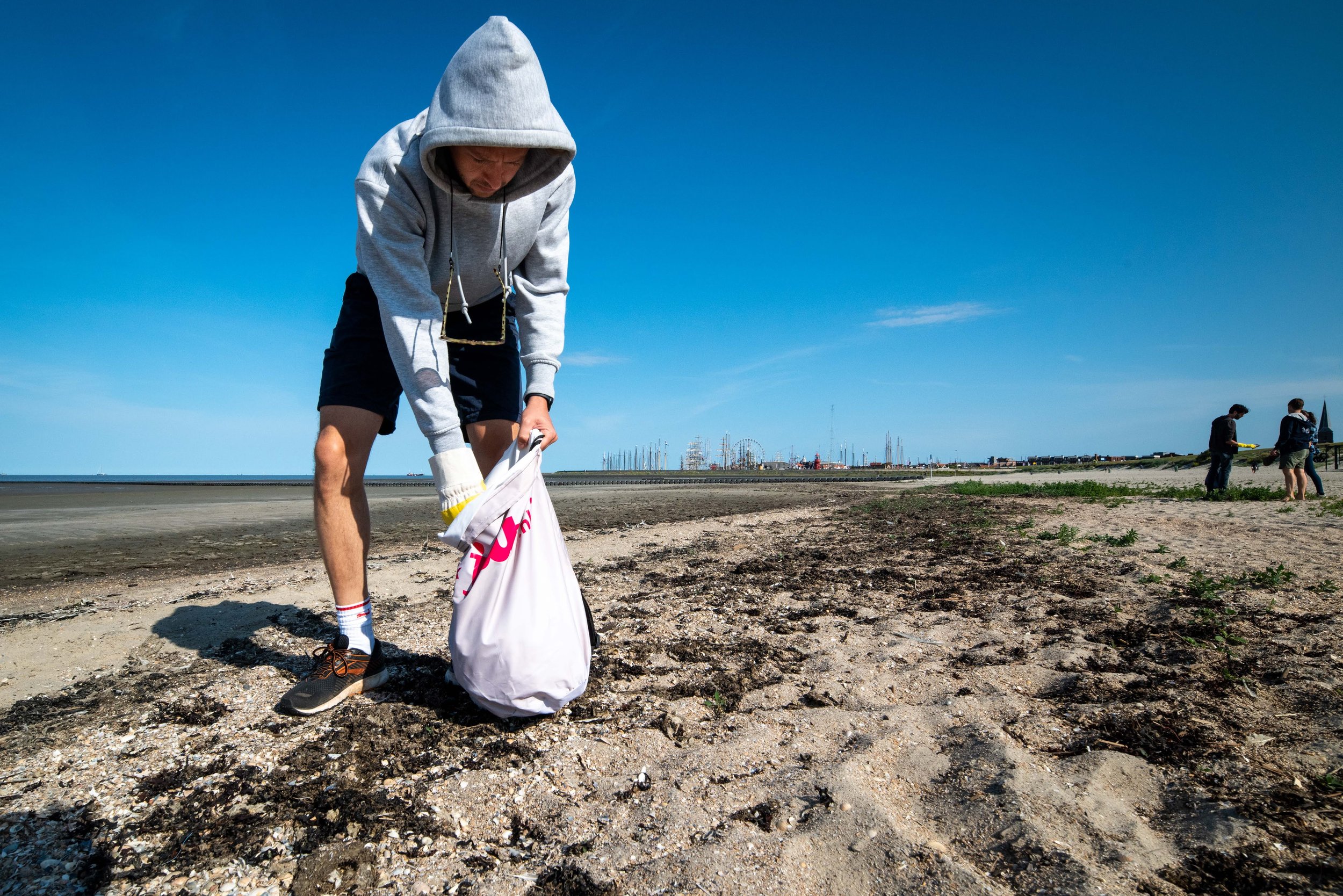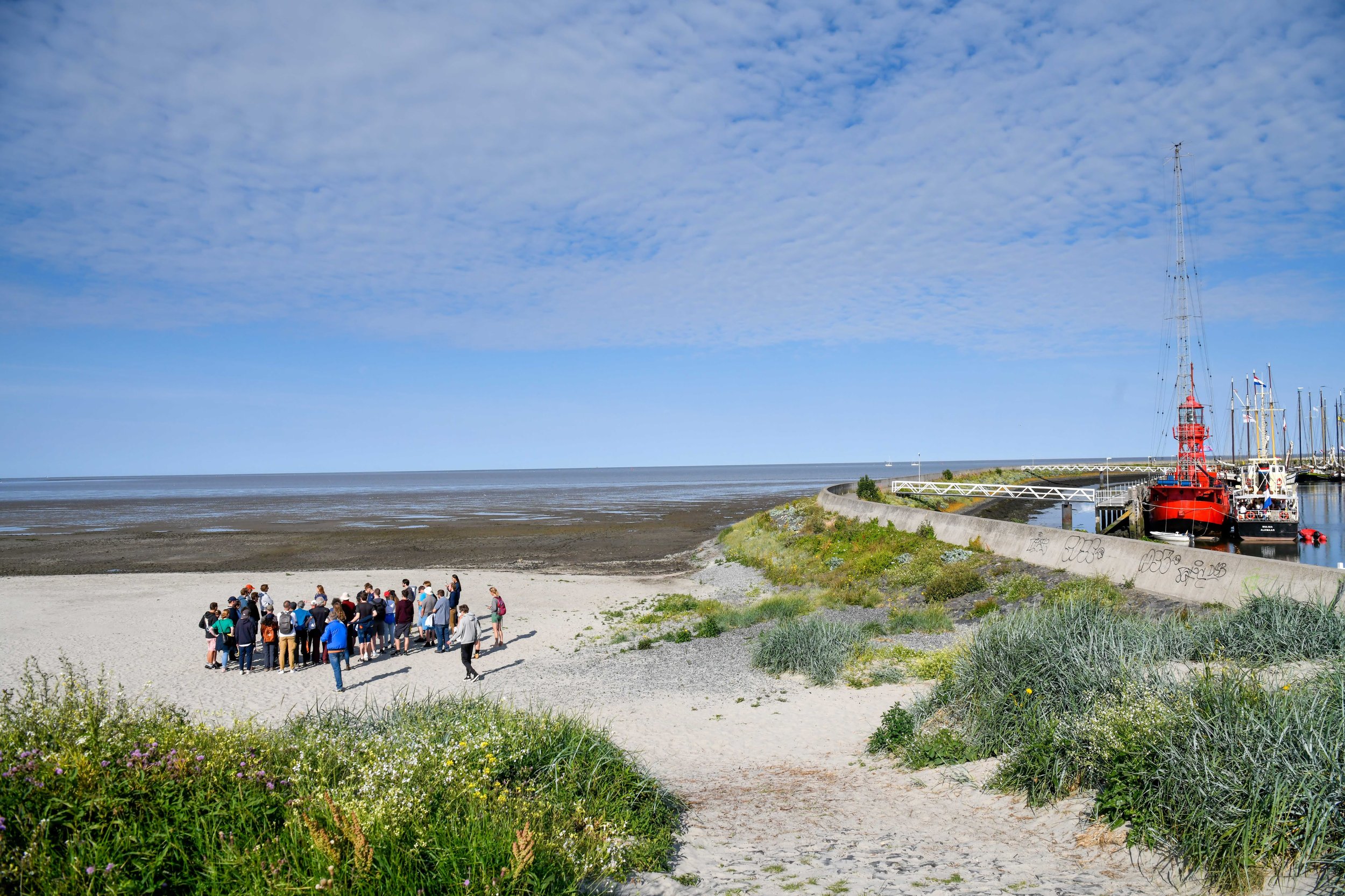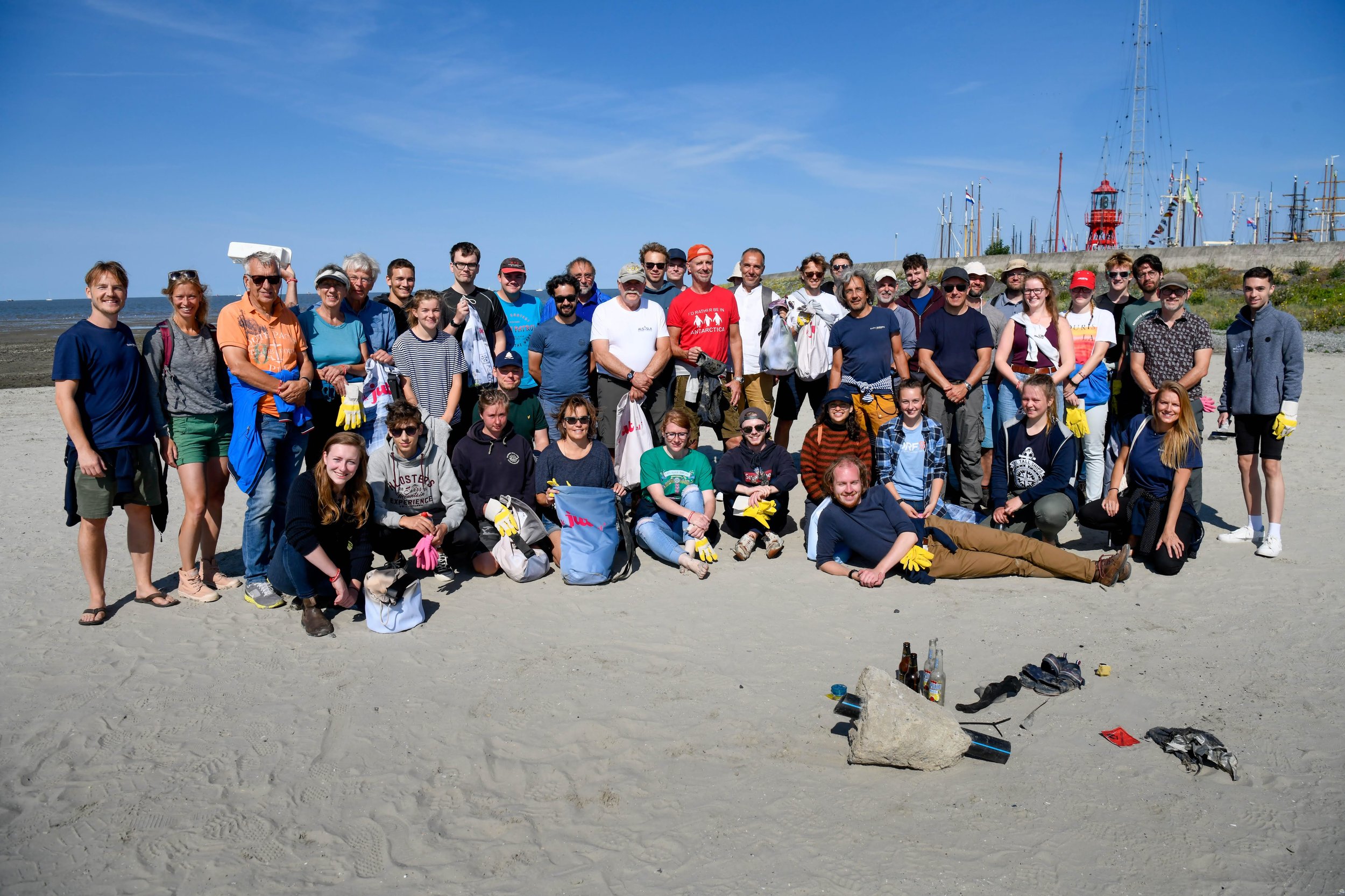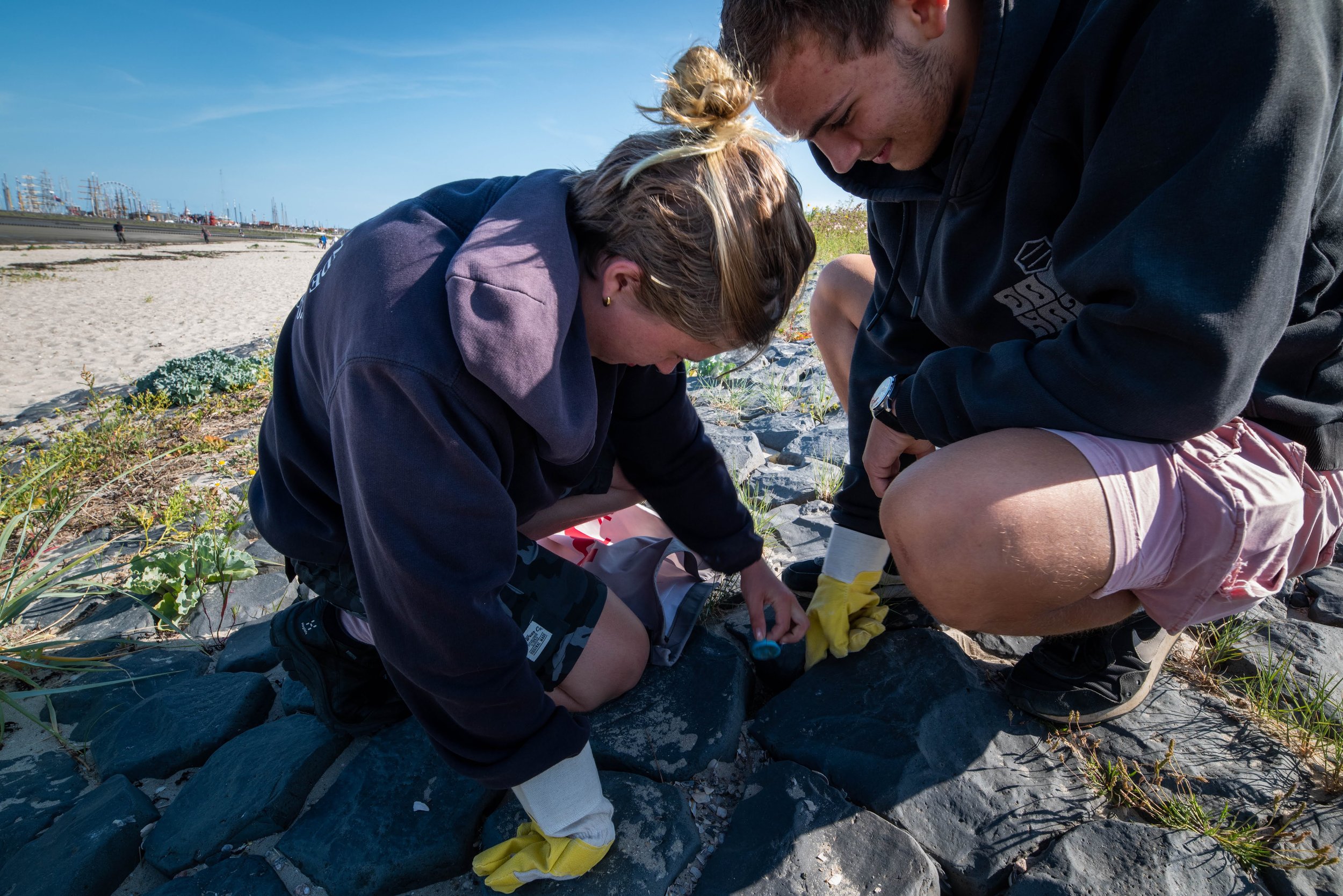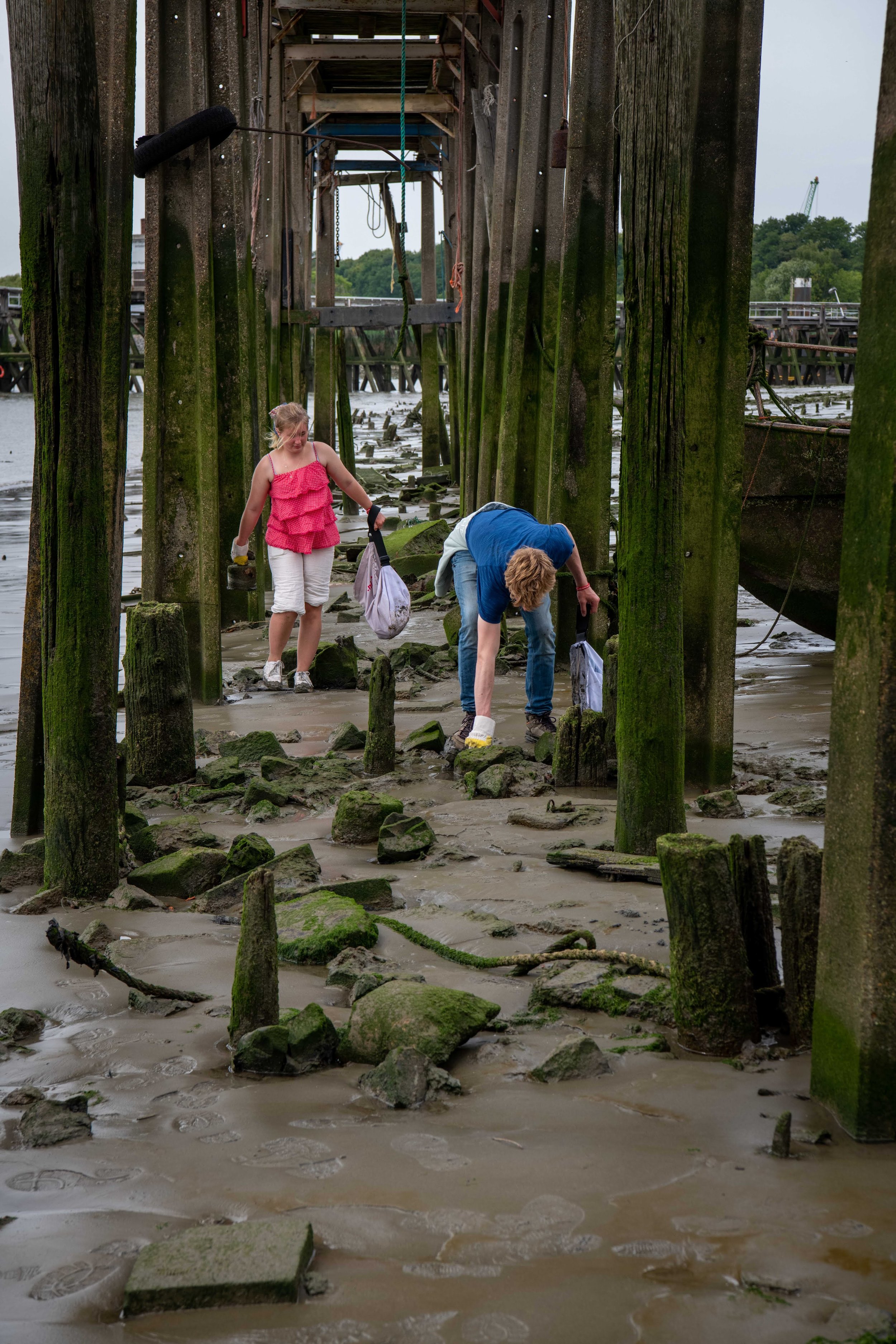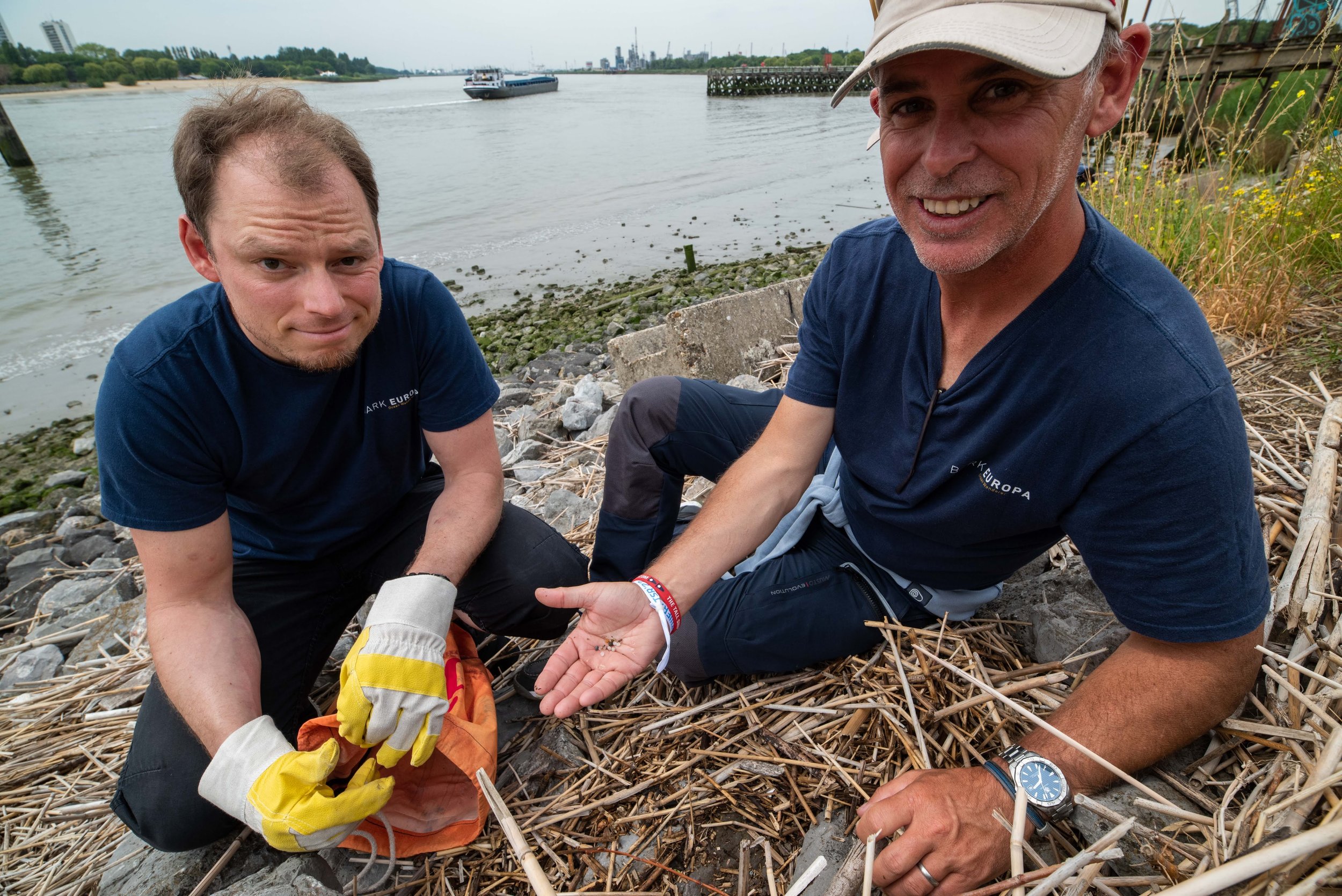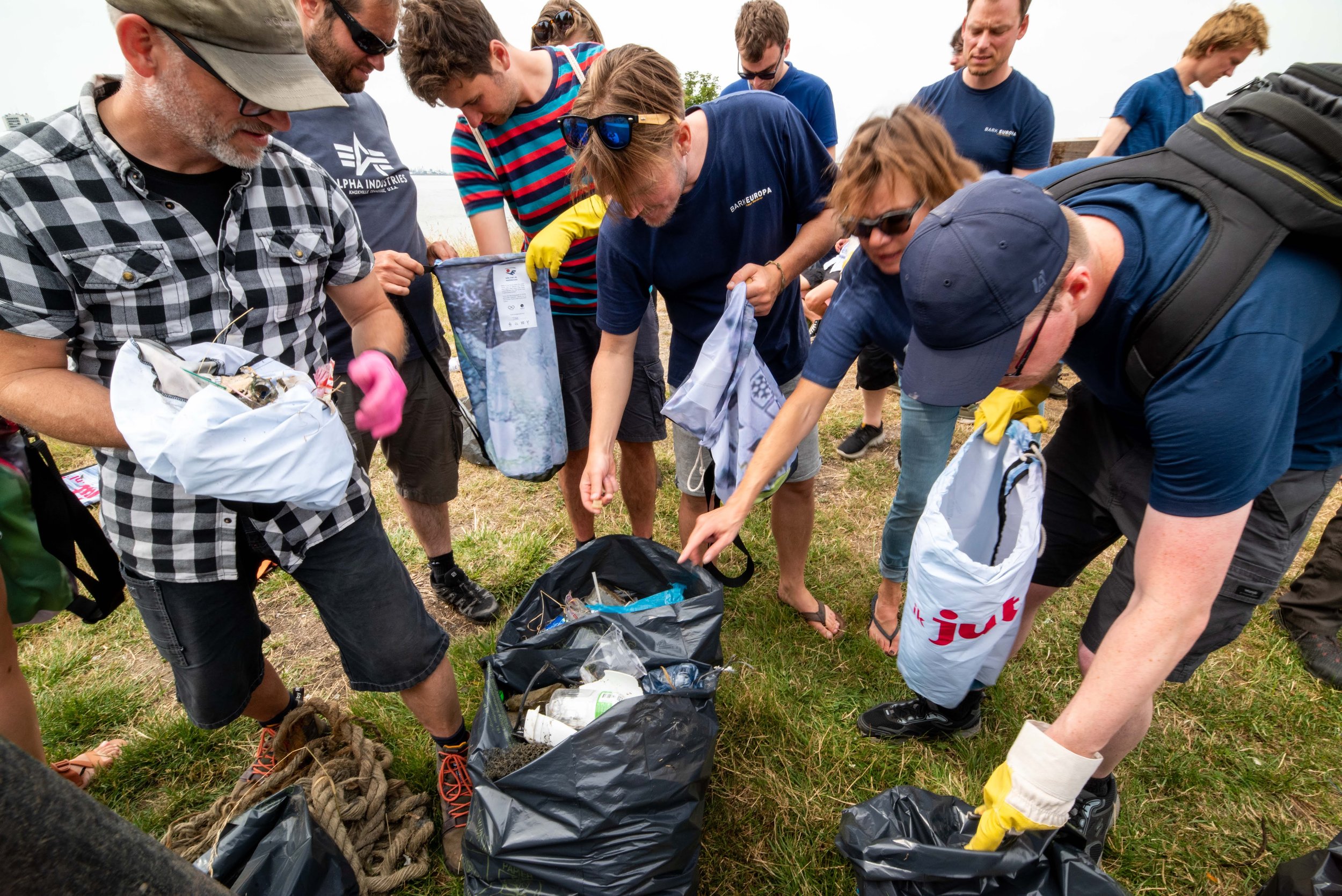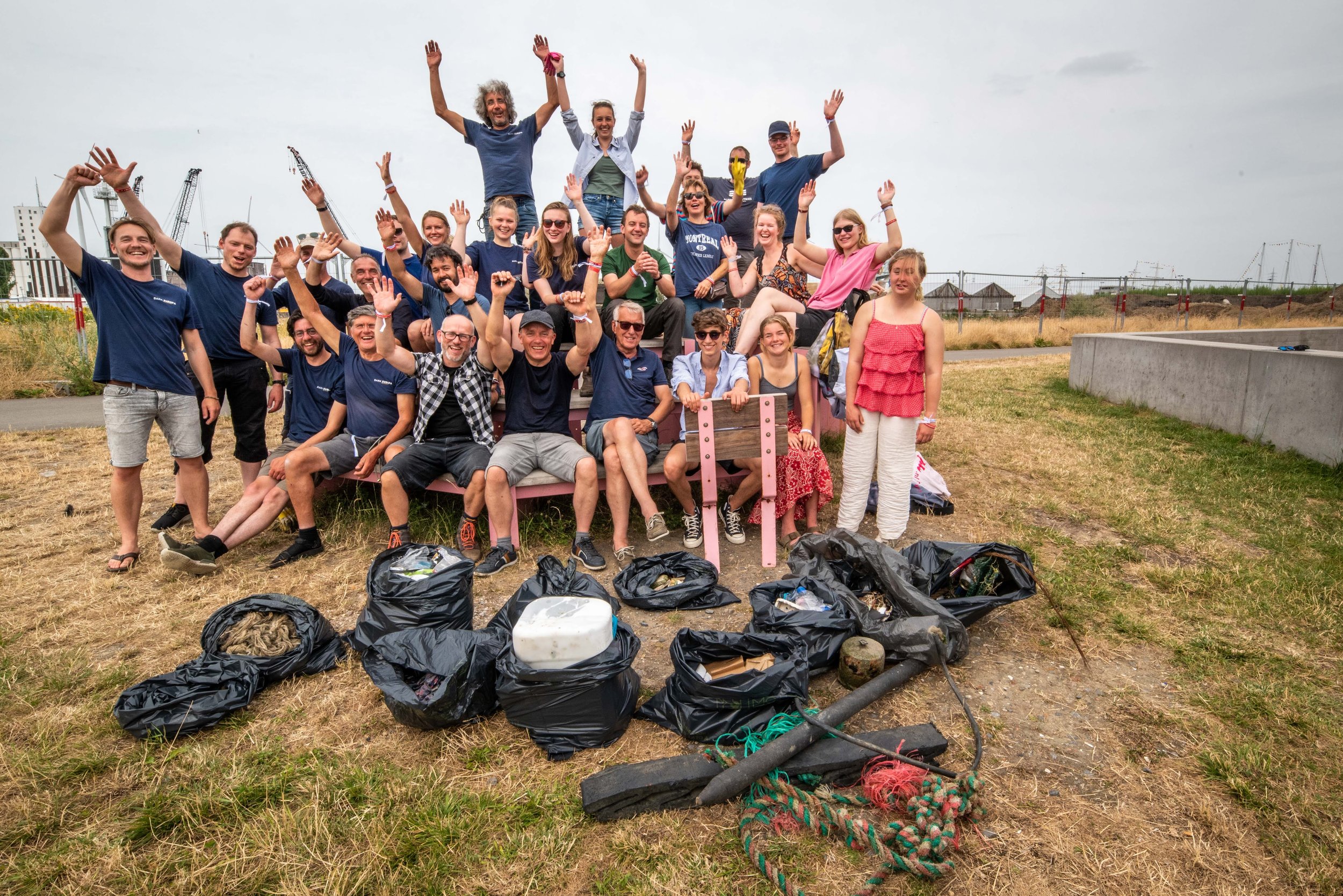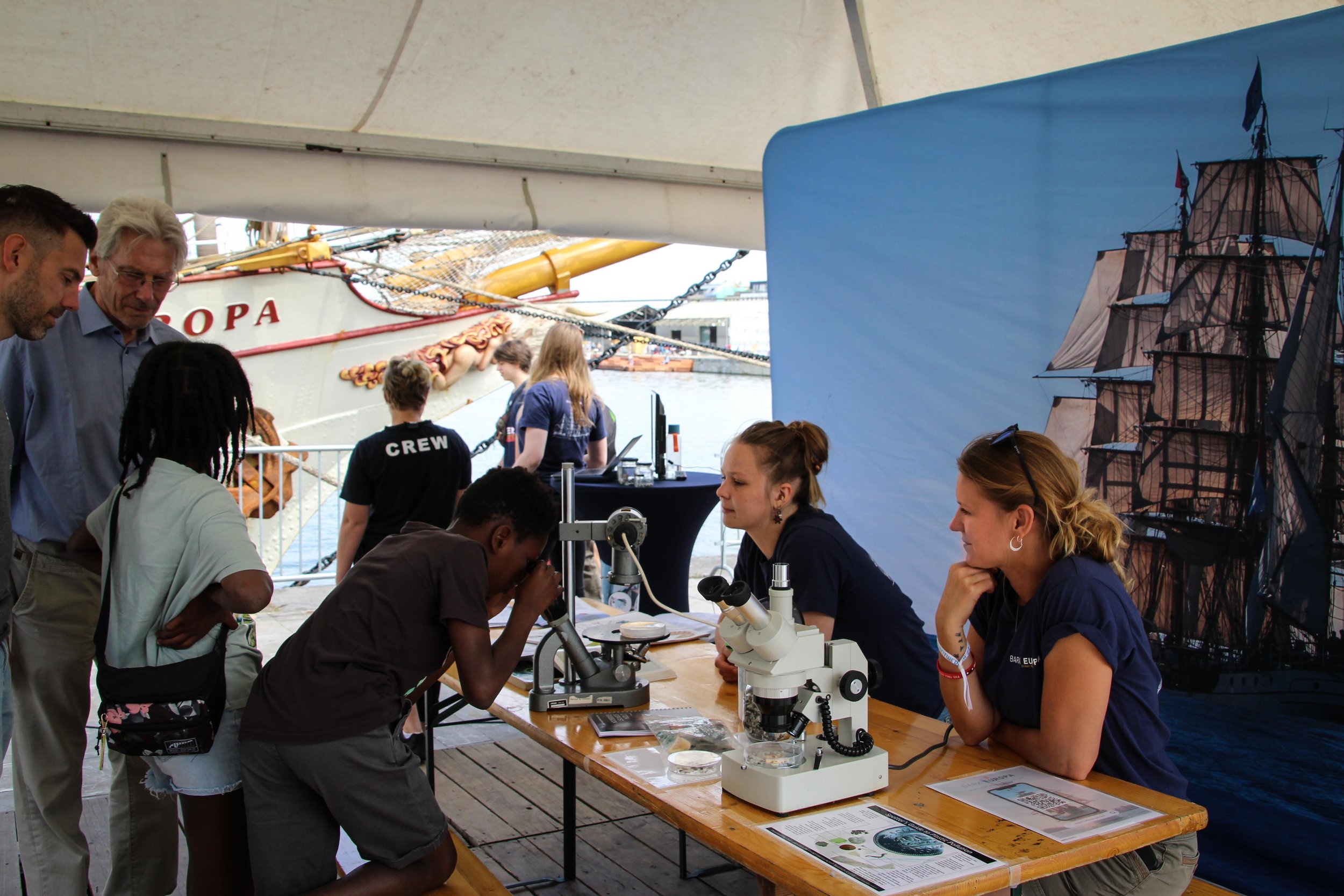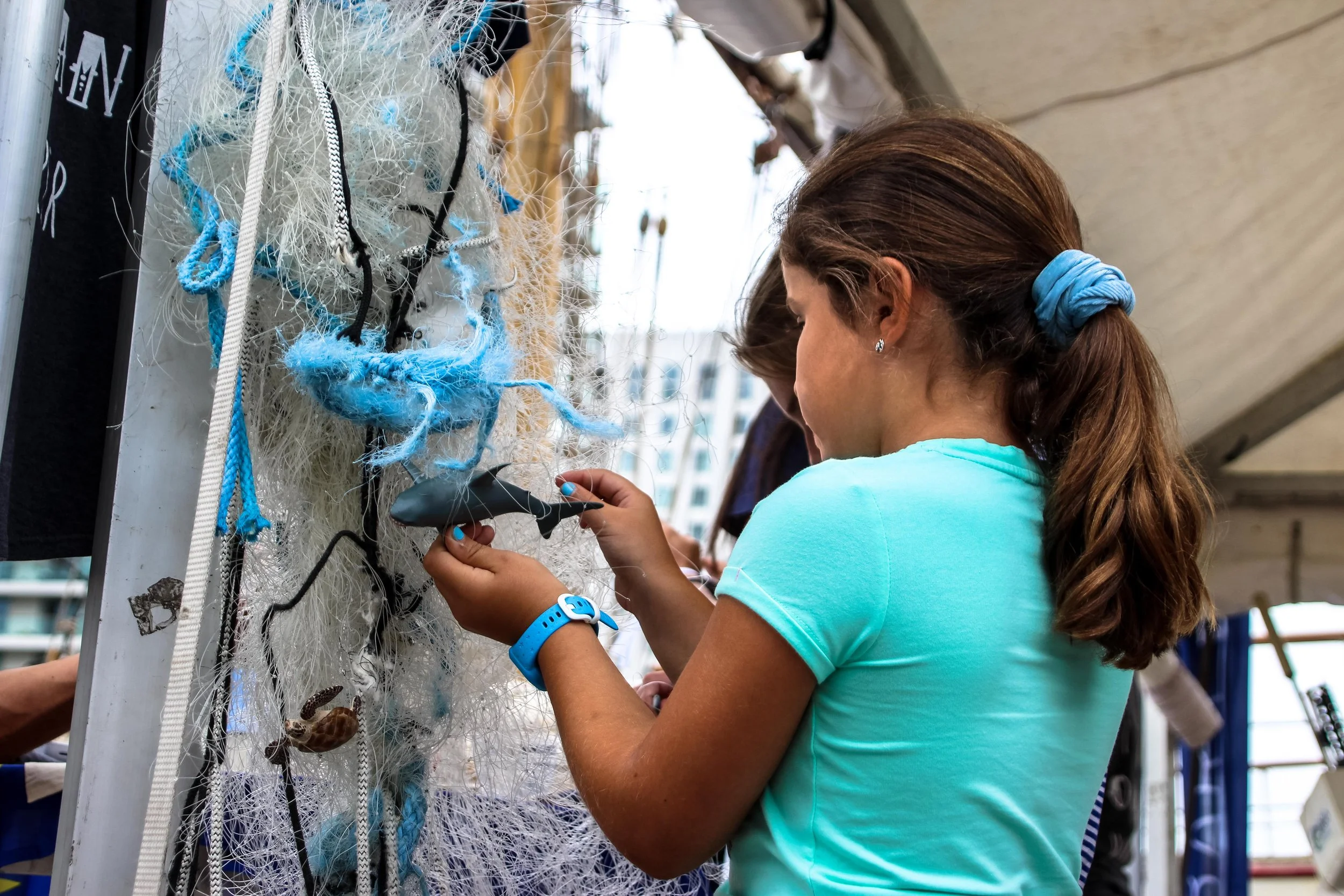July 2022 Nordic Ocean Watch Denmark once again embarked Bark Europa this time for the Tall Ships Races. We sailed as a Cruise-in-Company from Harlingen, The Netherlands across the Wadden Sea and the North Sea to Antwerp, Belgium. Both Harlingen and Antwerp where Tall Ships Race ports and where full of beautiful square rigged ships and sturdy long rigged schooners.
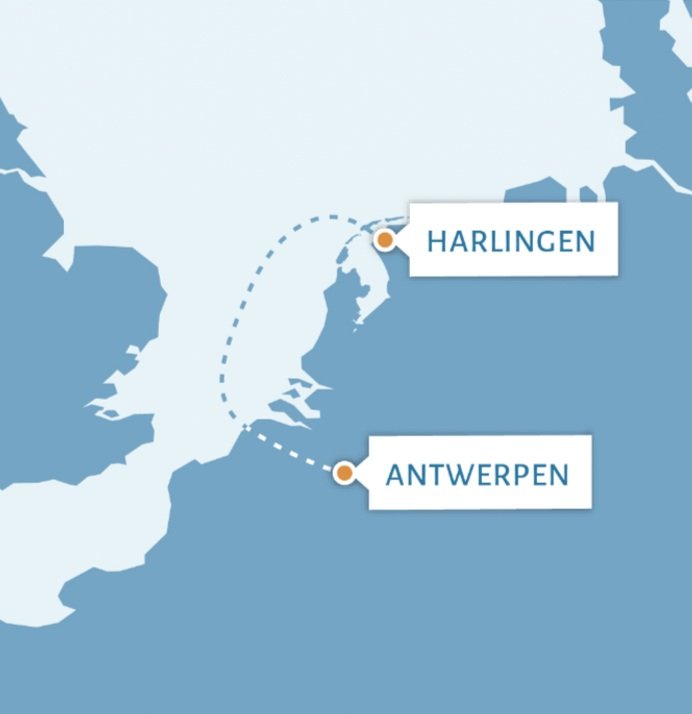

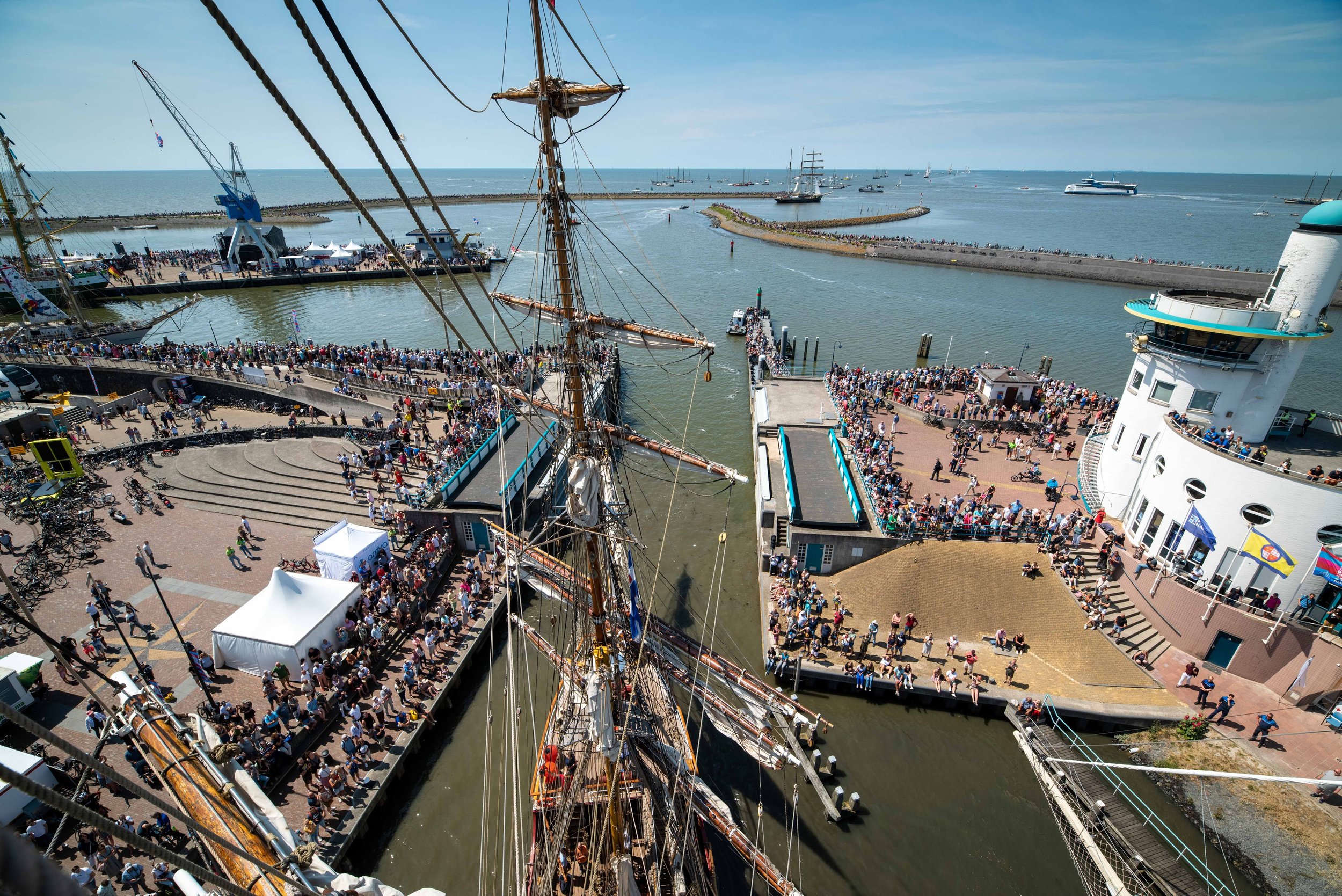
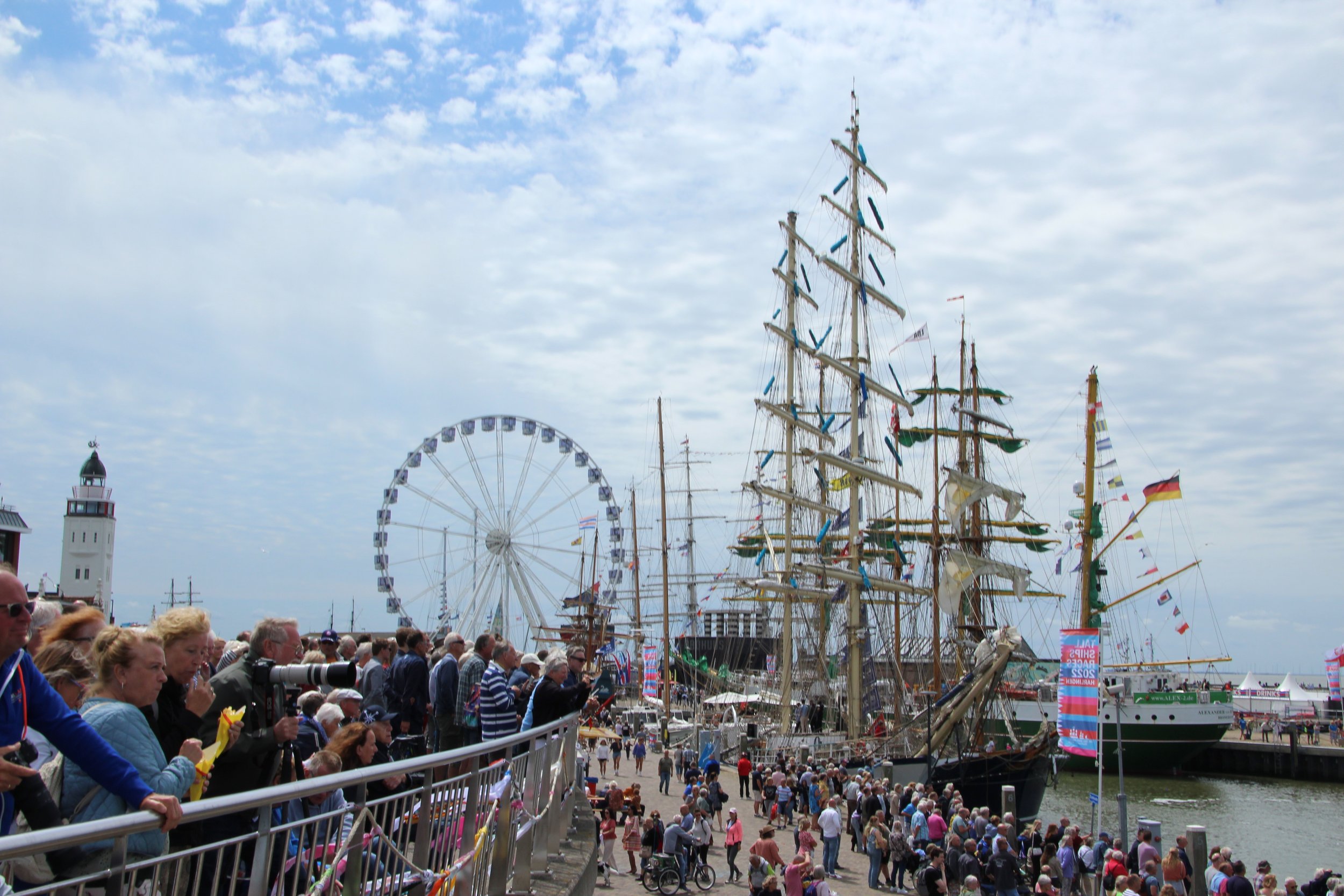

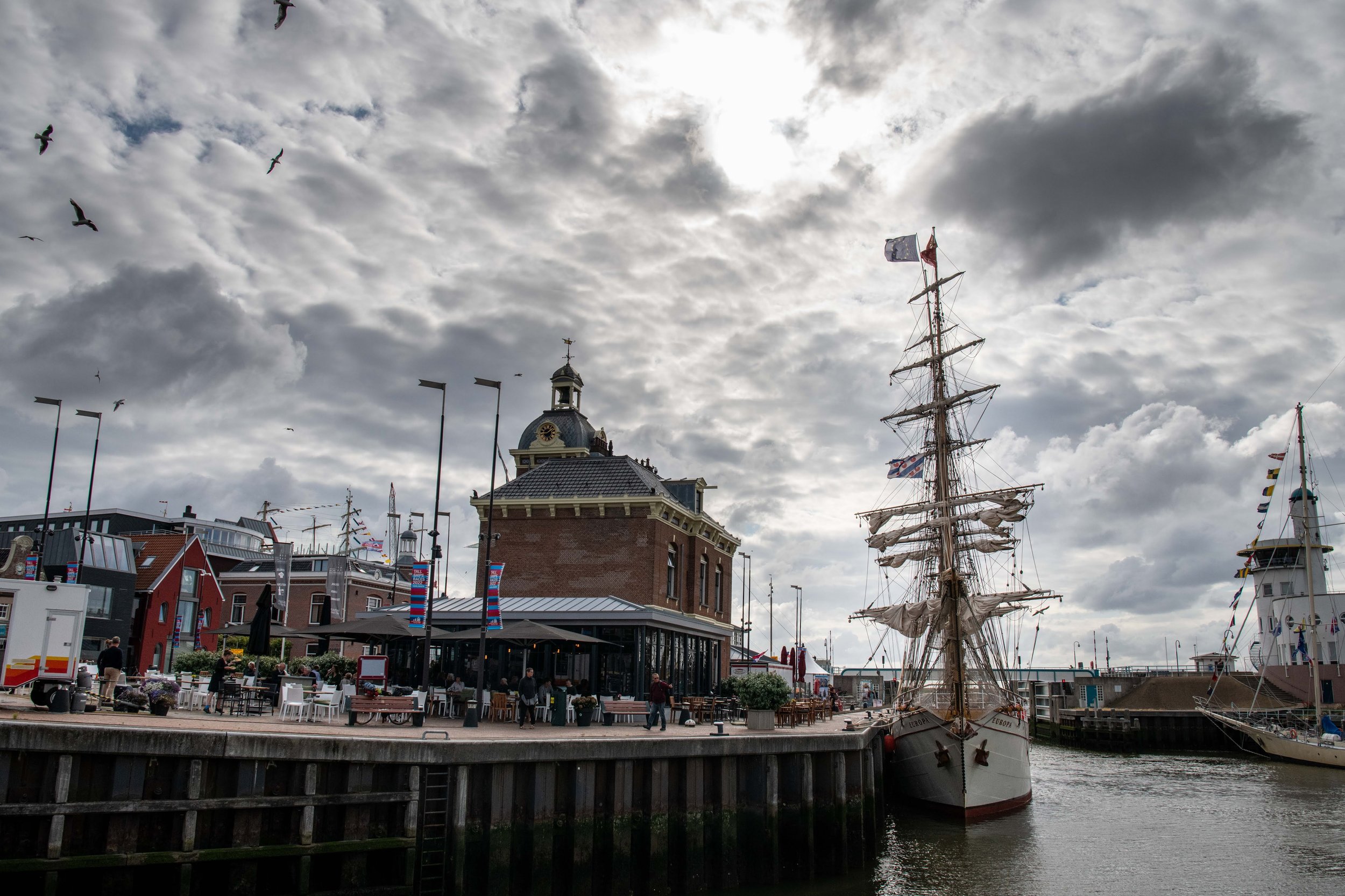
The Tall Ships Races is the largest annual event organised by Sail Training International. It's a summer series held in European waters where ports along the route is hosting festivals that can be expected to bring millions of visitors. Sports, social, and cultural activities is planned for the crew members. The first Tall Ships' race was held in 1956. It was a race of 20 of the world's remaining large sailing ships. Since then Tall Ships' Races have occurred annually in various parts of the world, with millions of spectators. Today, the race attracts more than a hundred ships, among these some of the largest sailing ships in existence.
Harlingen is one of the oldest seaports in The Netherlands, and it’s the gateway to northern Holland from the North Sea. Antwerp is Belgium’s second-biggest city and Europe’s second-largest port. When we arrived at Harlingen and Antwerp port we sat up a research tent at the key-side next to the impressive Tall ship Bark Europa. Many came by the research tent during our days at port to hear about our expeditions and our research onboard Bark Europa.
Abi Smyth from Bangor University, Wales conducted a research on Bark Europa about ocean acidification and the impact on plankton abundance along a transect from Horta, Portugal to Harlingen, The Netherlands from May-July 2022.
Carbon dioxide released into the atmosphere is making our oceans more acidic, but we don’t really know the impact this has on the organisms that live there. Her study aims to find out how this affects plankton, the base of the food chain.
Abi and I spend our days at port explaining about our individual research to everyone interested that came by our research tent. They could look at microscopes with different plankton species and microplastic particles found in the Atlantic Ocean.
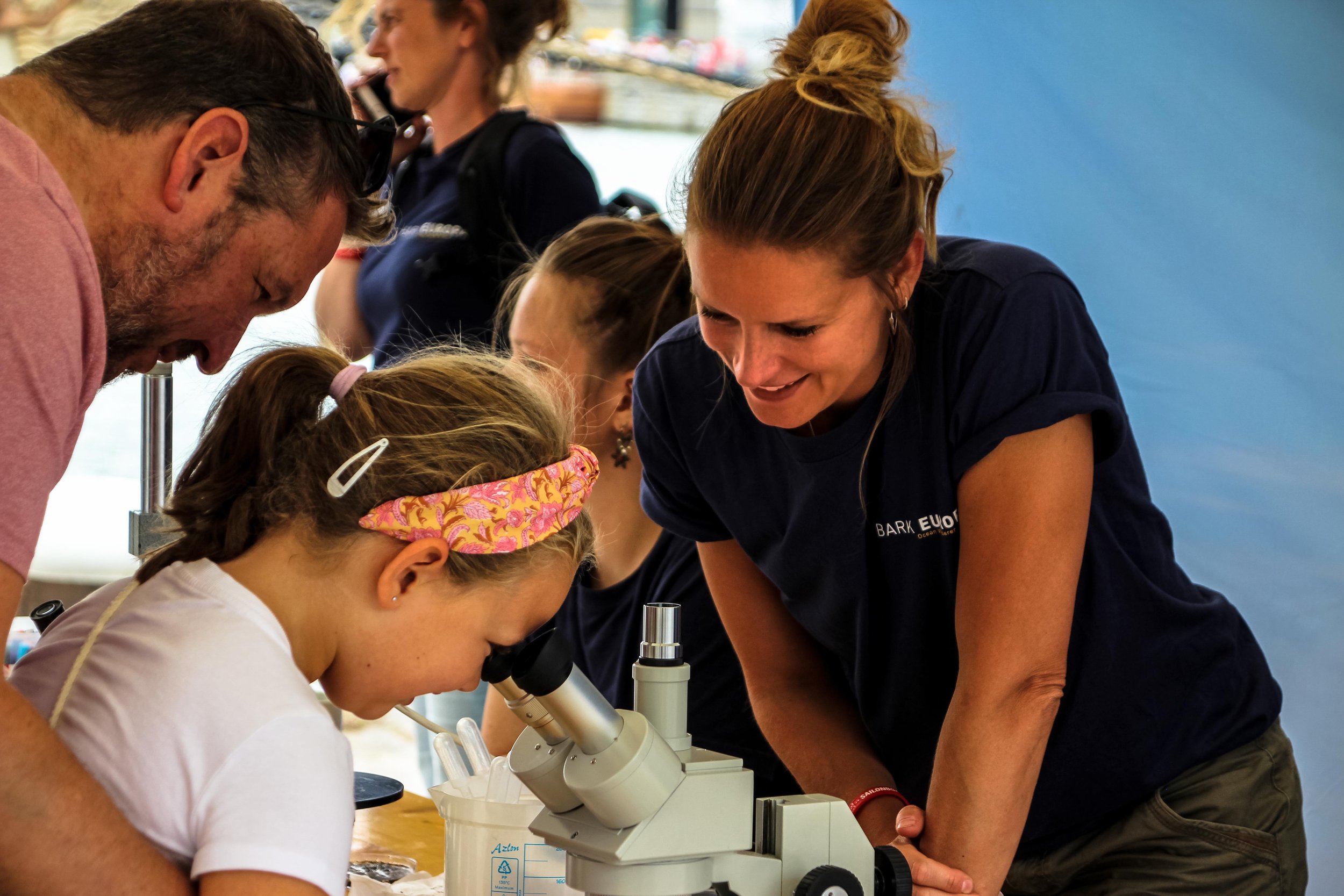
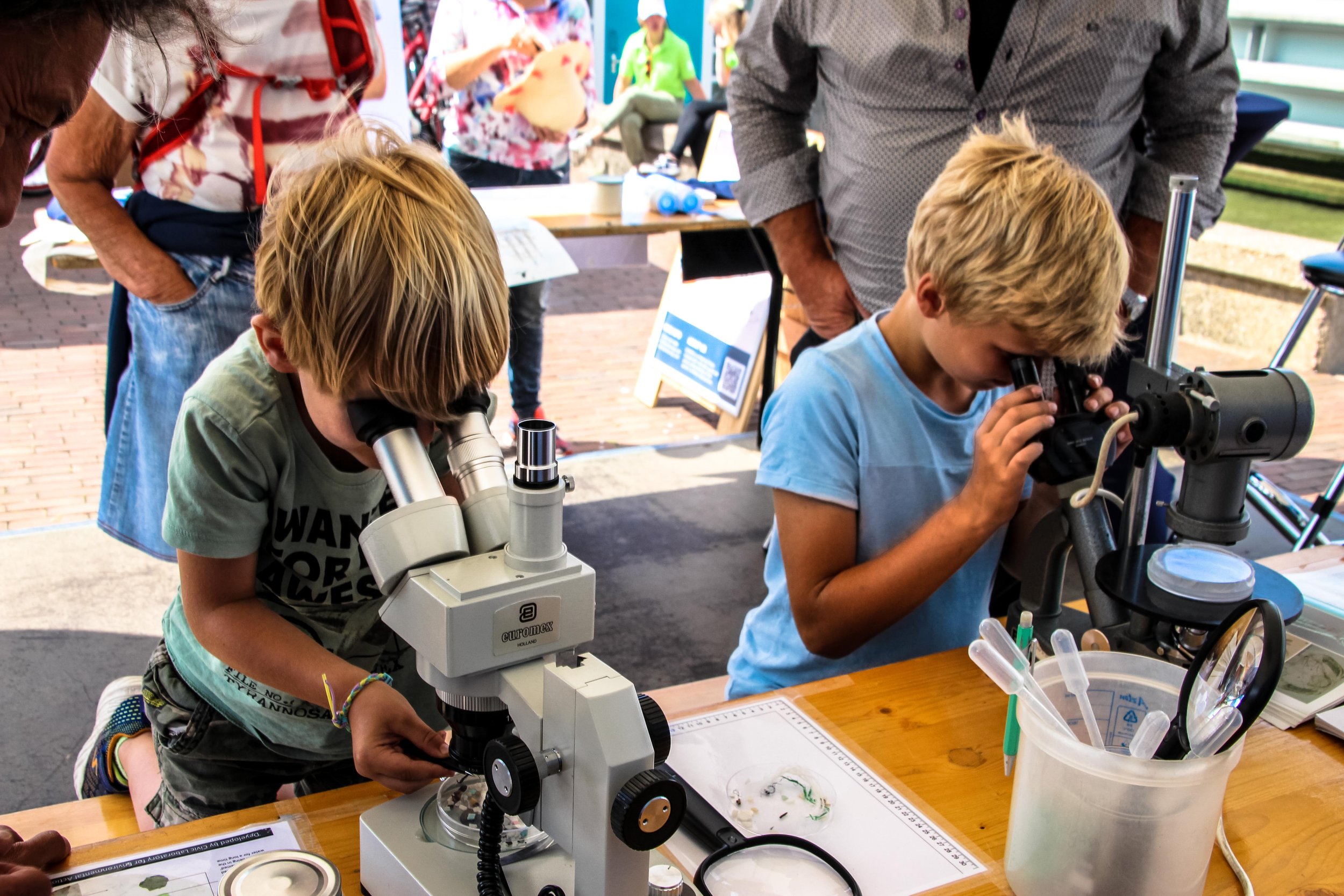
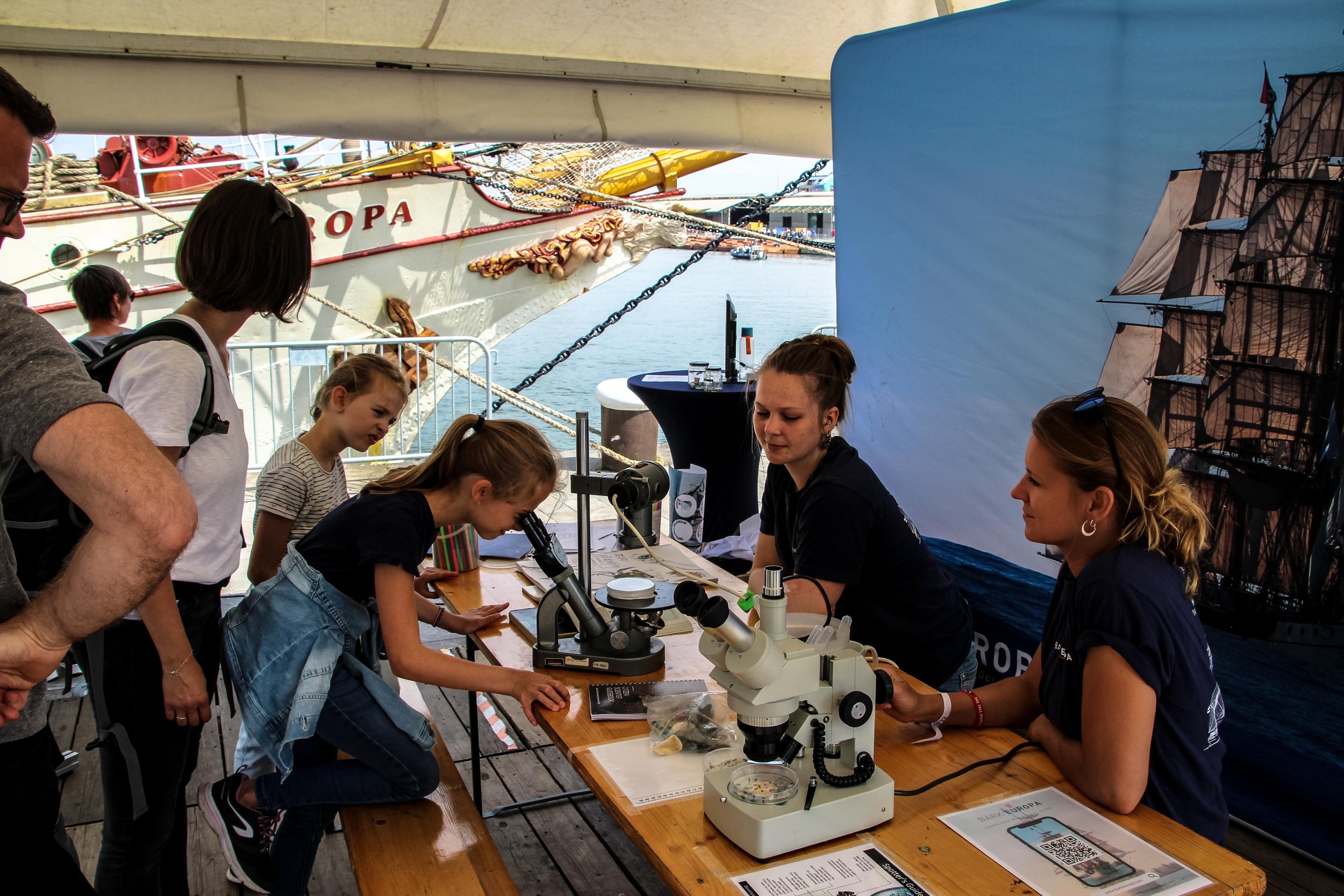
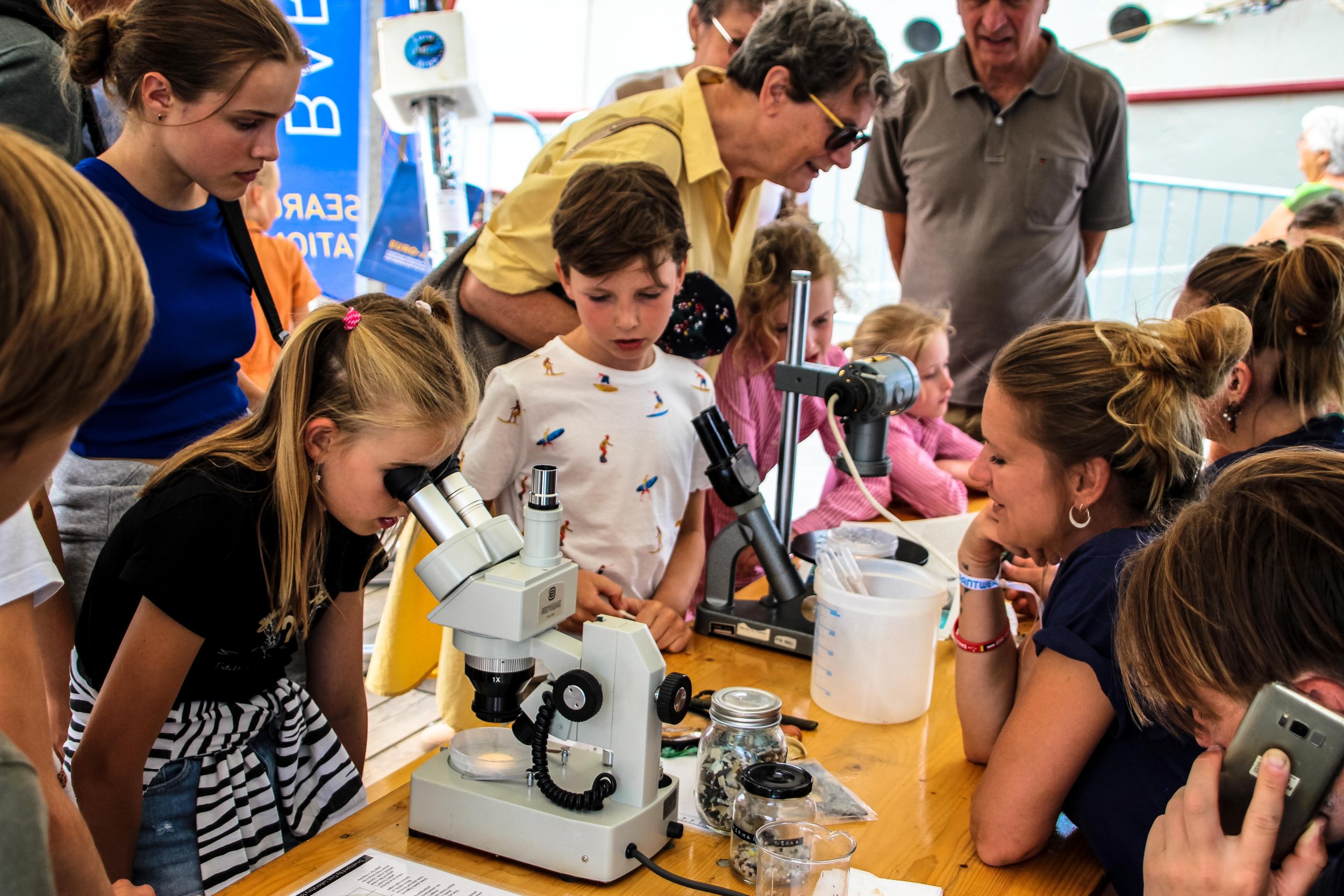
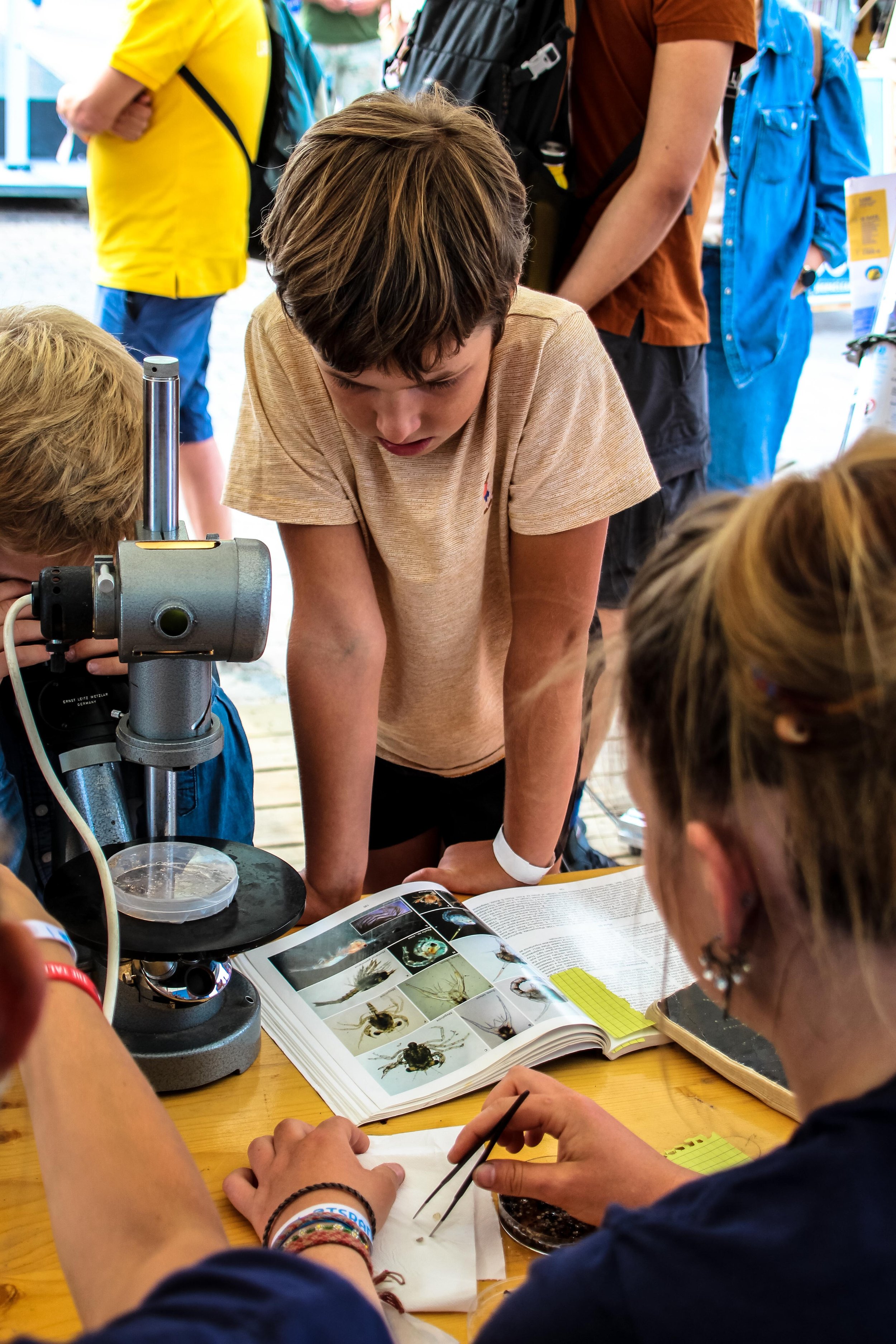
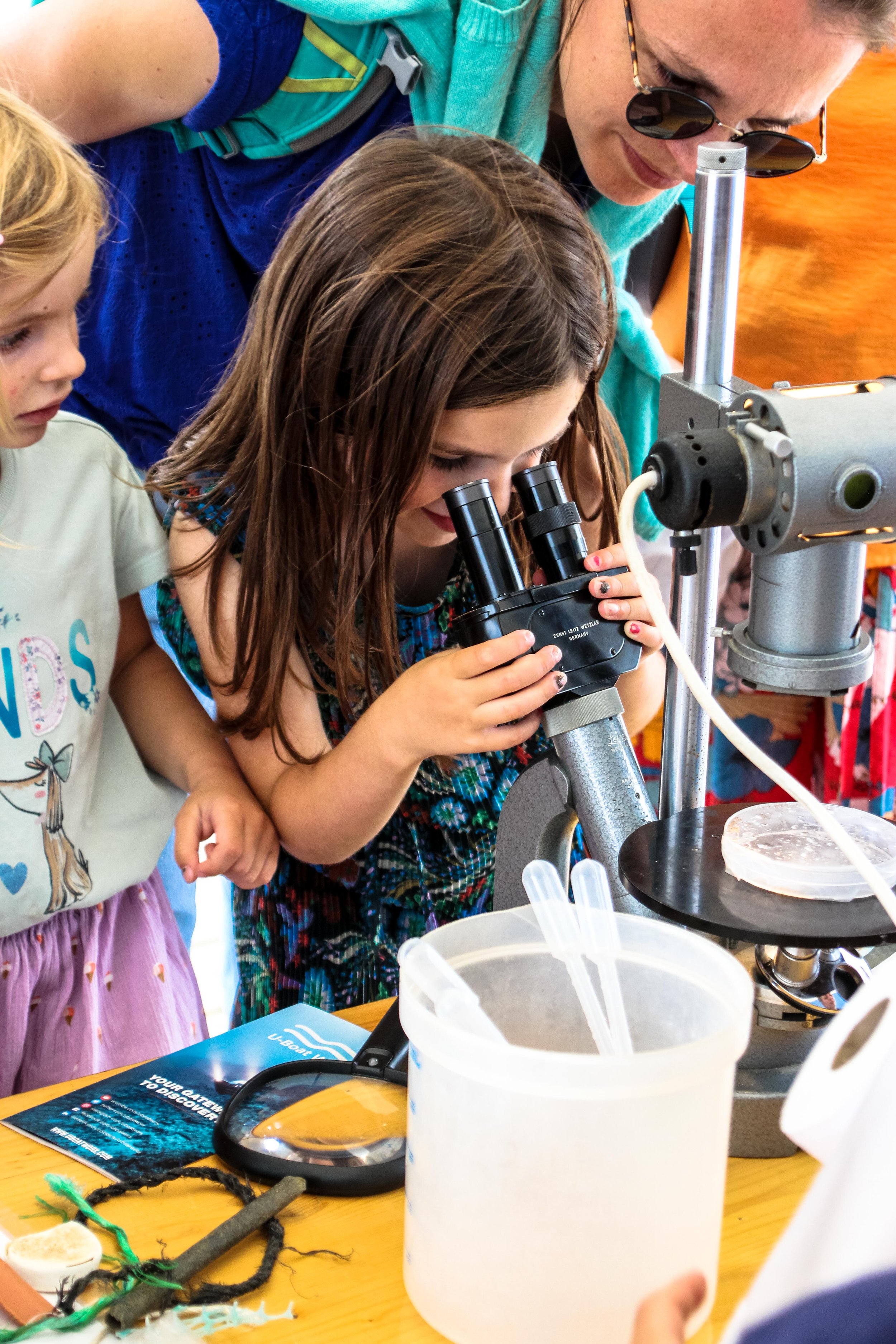
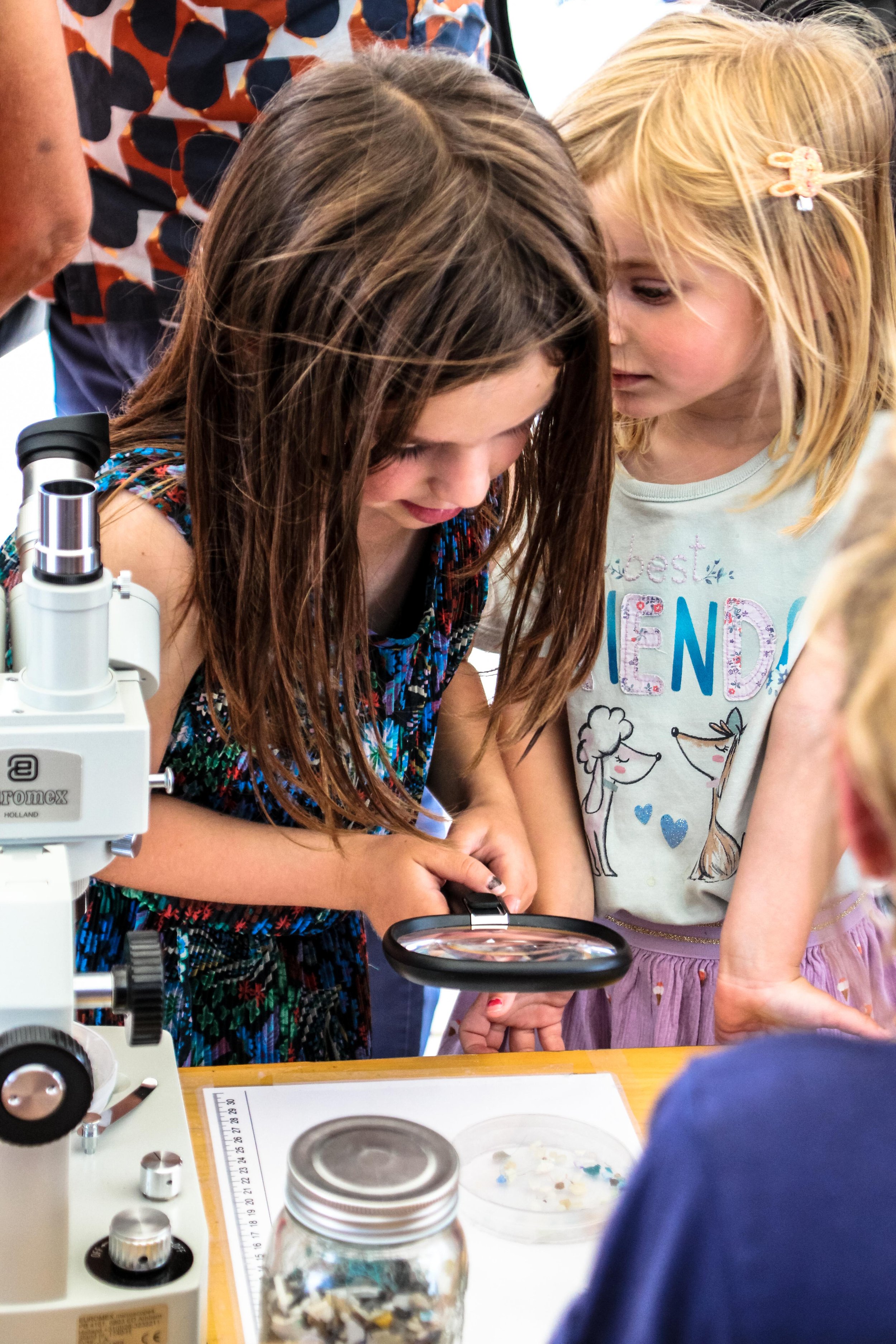

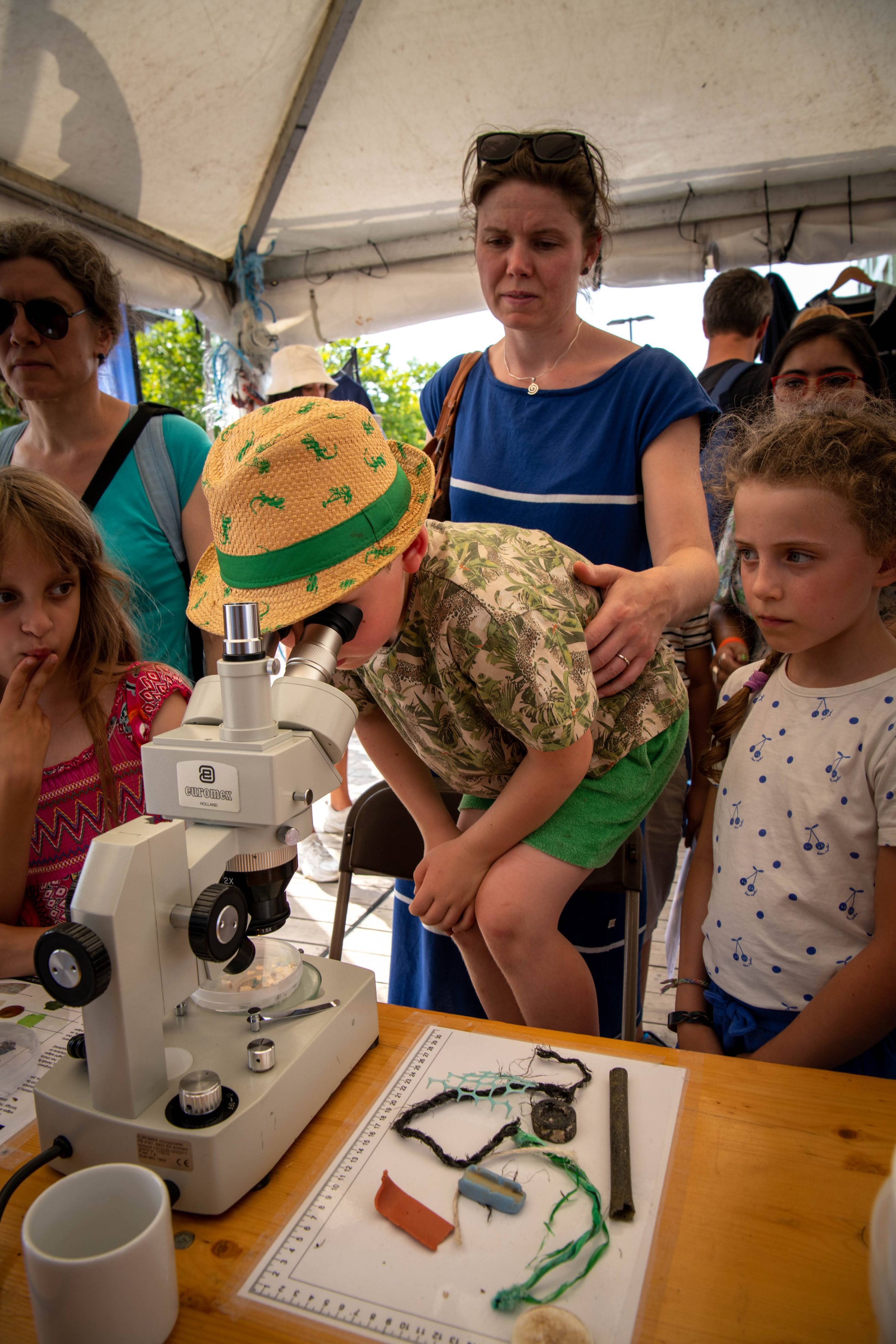
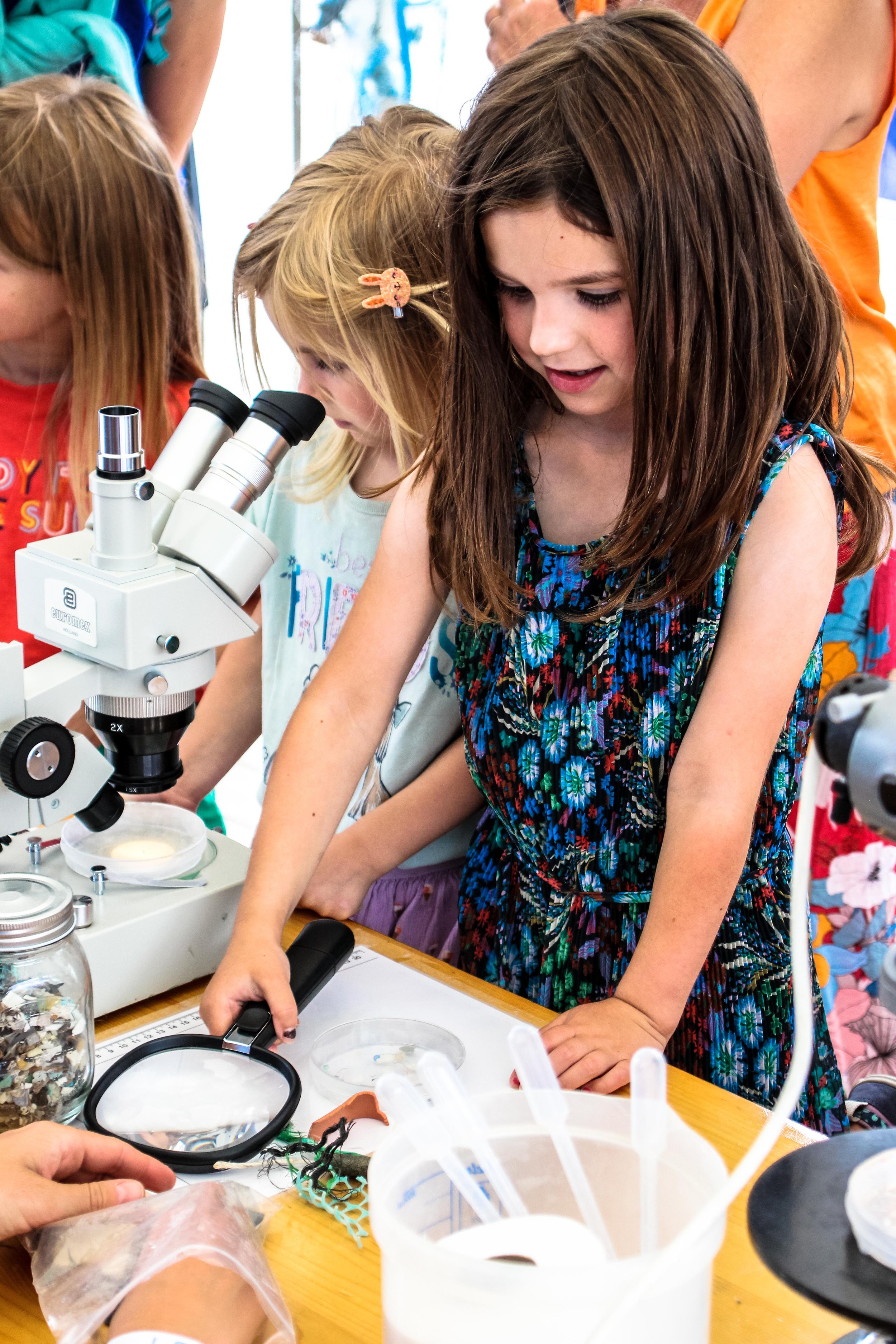
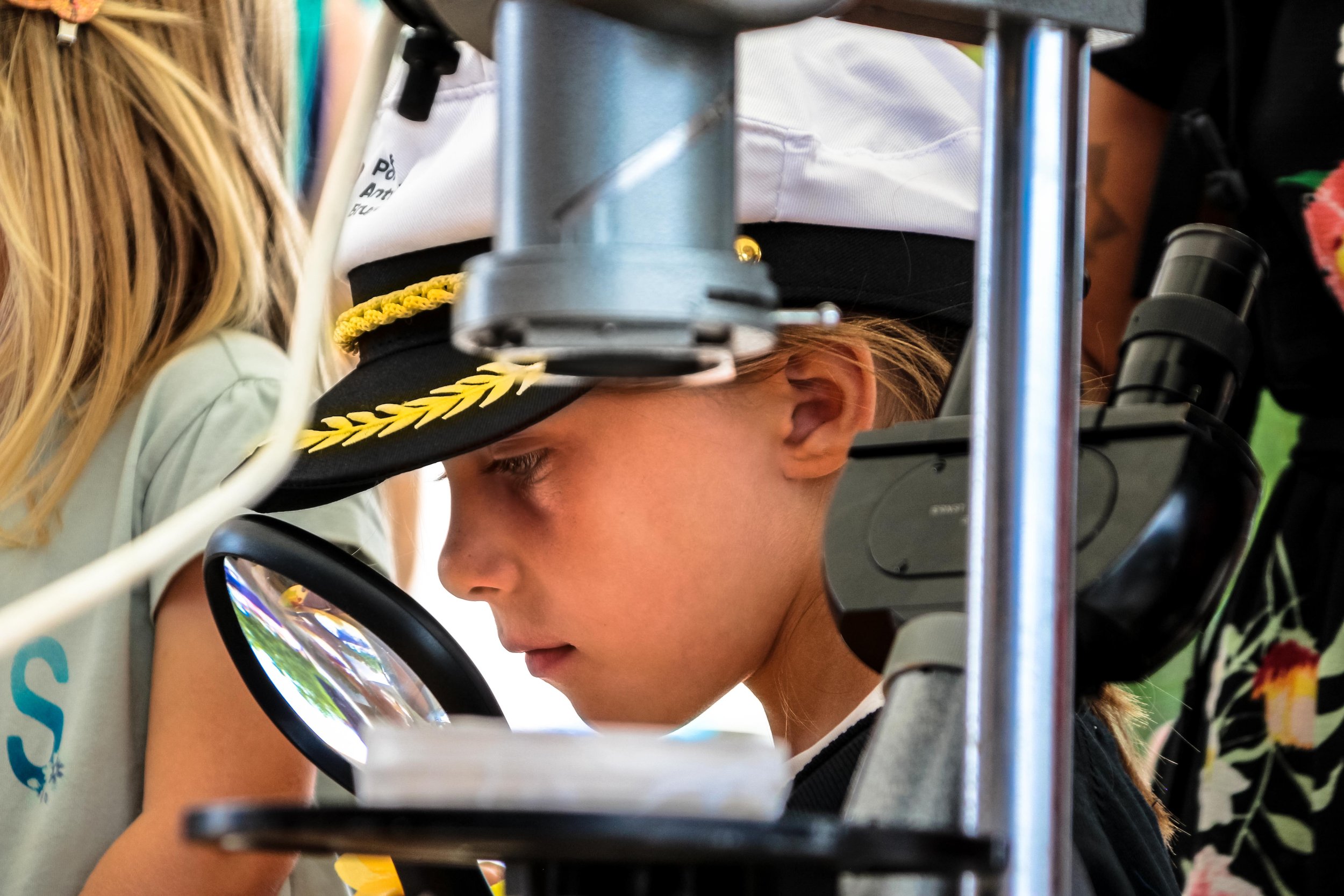
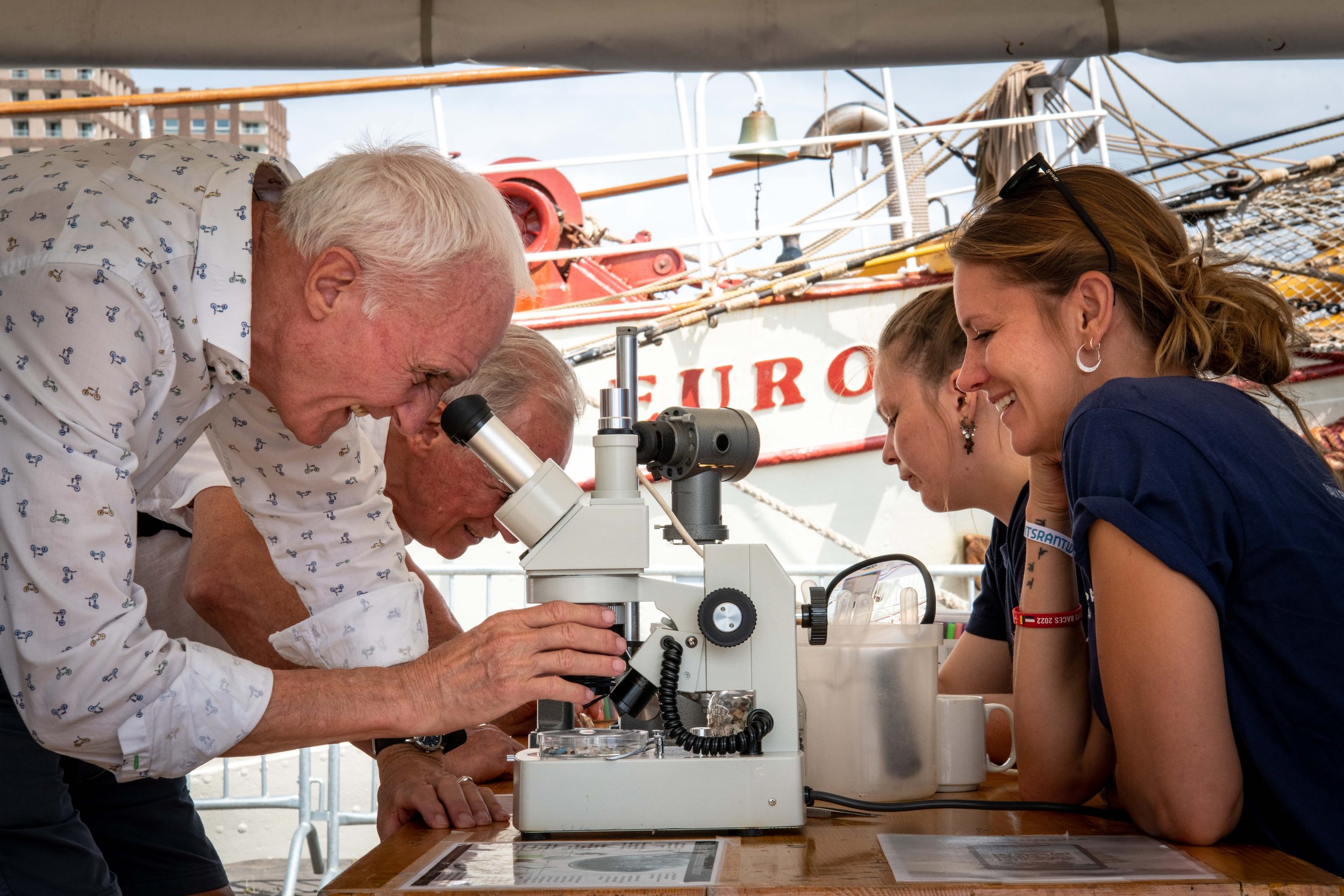
The children could carry out their own simulation experiment and trawl for microplastics with a mini manta trawl in a water tank. Then they would look in a microscope to see what they had collected and try and identify the microplastic particles.
We shared our knowledge about our research and talked about plastic pollution and its impact on the environment and marine life. Everyone found it an important subject and was very interested in learning more about our research.
Karl Beerenfenger from The Netherlands who is the project manager for circular economy at Recycling Network Benelux and campaign leader at Plastic Butt Collective had brought along a ghost net. Ghost nets are old fishing nets discarded into the ocean from the fishing industry or from land. They are very dangerous for marine animals, because they easily get entangled in them. The animals are often unable to free themselves from the net, consequently leading to the death of the animals.
Everyone was very interested in learning more about ghost nets and plastic pollution. The children enjoyed to free the entangled animals from the net and tried to guess the different species.
To put an even greater focus on ocean pollution we went to the local beach in both Harlingen and in Antwerp to do a beach cleanup together with the guests onboard Bark Europa.
